Drosera collina (N.G.Marchant & Lowrie) Lowrie
The epithet, collina, is derived from the Latin collinus (of, or growing on, hills), in reference to its preferred hill habitats, which are scattered throughout the Darling Range.
Western Australia – Gidgegannup; Armadale; Dwellingup.
Grows in loam-laterite soils and is commonly found in shaded areas of the jarrah forest found throughout the Darling Range.
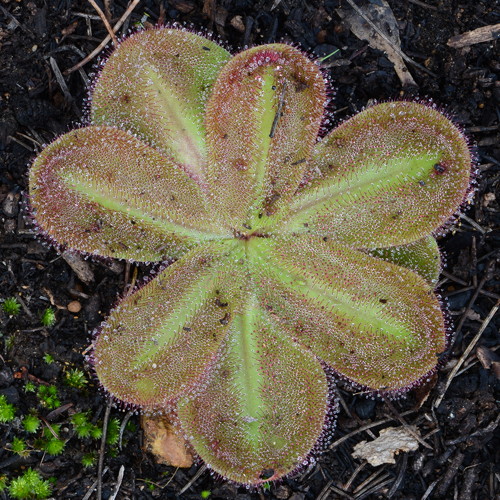
Drosera collina. Photo © Richard Nunn.
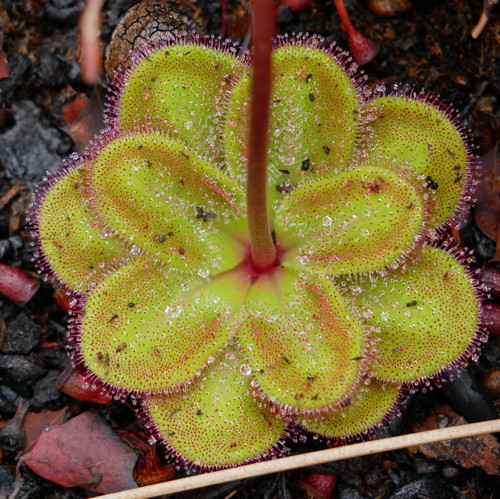
Drosera collina. Photo © Thilo Krueger.
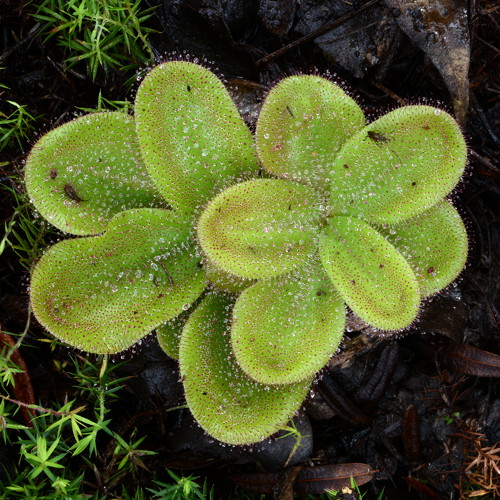
Drosera collina. Photo © Richard Nunn.
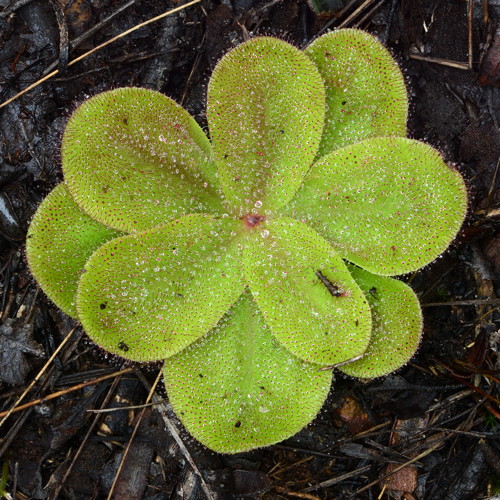
Drosera collina. Photo © Richard Nunn.
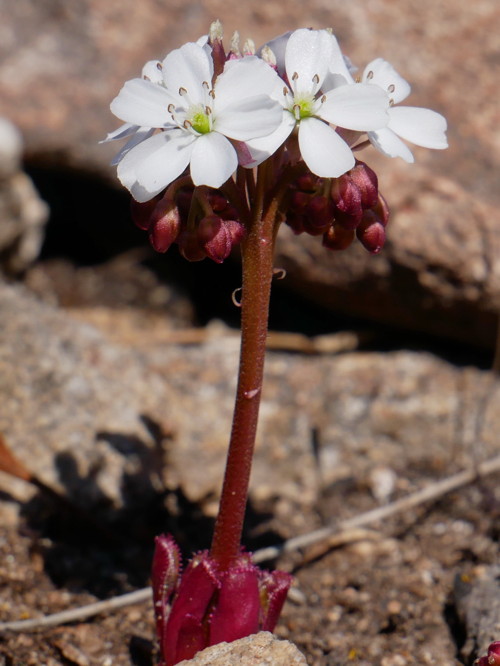
Drosera collina. Photo © Thilo Krueger.
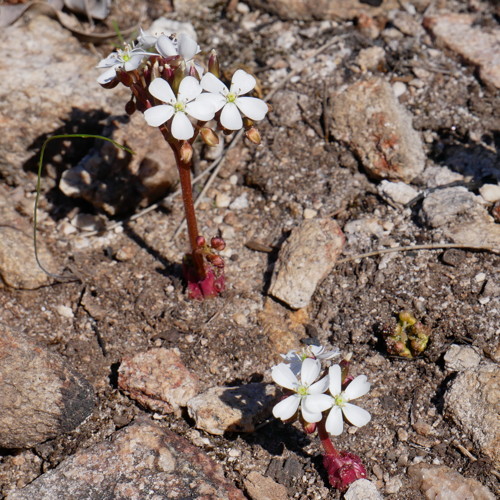
Drosera collina. Photo © Thilo Krueger.
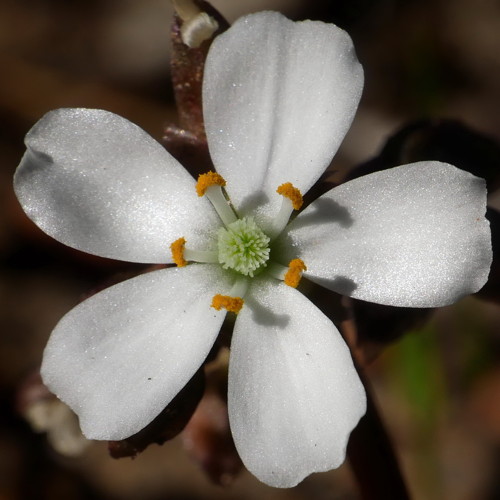
Drosera collina. Photo © Thilo Krueger.
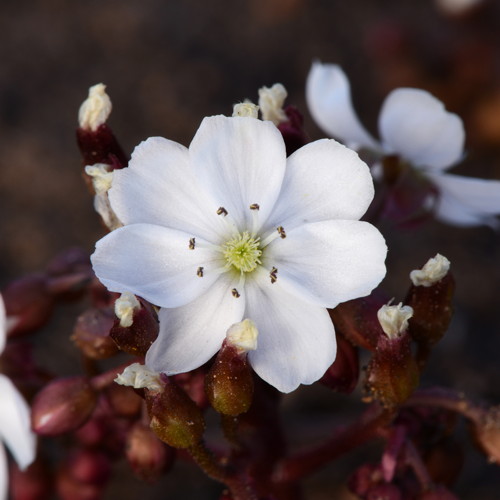
Drosera collina. Photo © Richard Nunn.
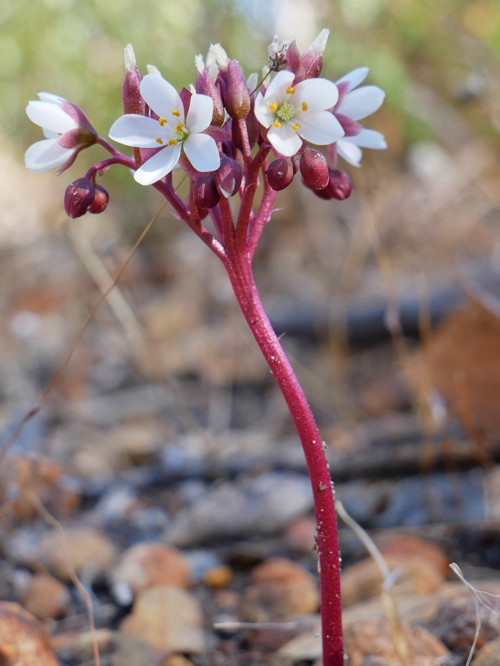
Drosera collina. Photo © Thilo Krueger.
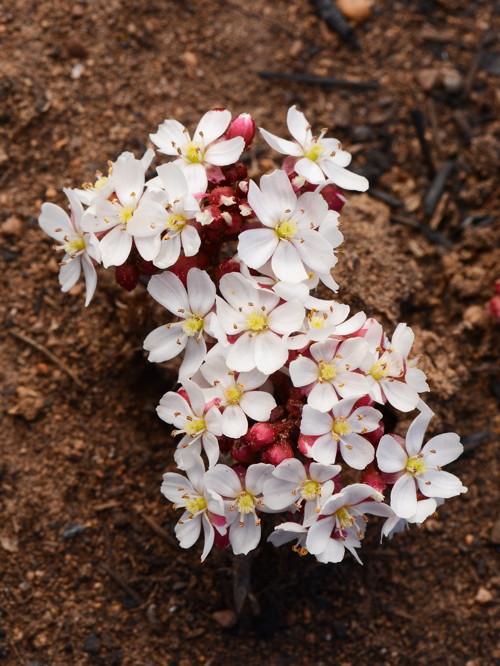
Drosera collina. Photo © Richard Nunn.
Drosera drummondii Planch.
The epithet, drummondii, honours James Drummond (1784–1863), the first Western Australian government naturalist (1829–34), the most successful botanical collector in the region of his time, he discovered ca. 70 new species.
Western Australia – east of Esperance; east of Perth; Wanneroo; Pinjarra.
Grows in deep sand in Banksia forest on well-drained, higher ground. Never grows in swampy ground, though sometimes near it, but only on higher ground. Grows in the Darling Ranges in loamy soils. All locations dry out in summer.
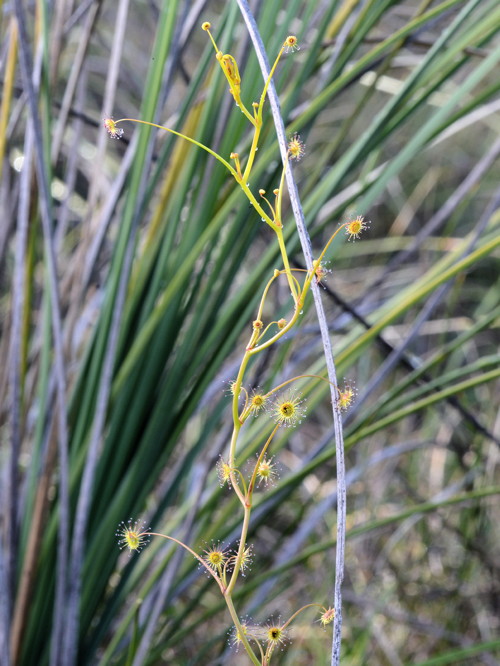
Drosera drummondii. Photo © Richard Nunn.
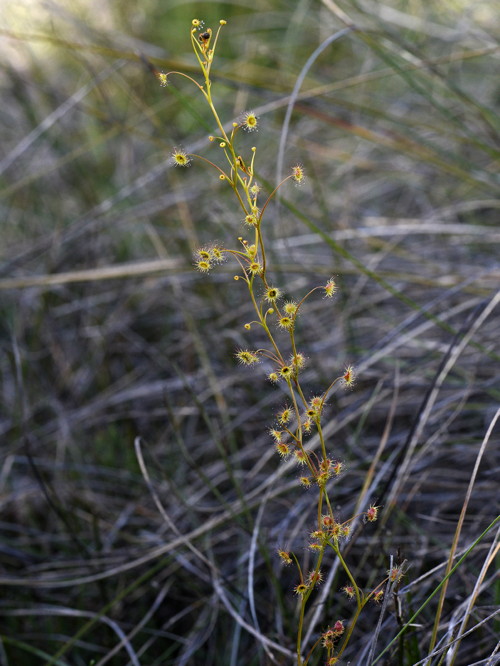
Drosera drummondii. Photo © Richard Nunn.
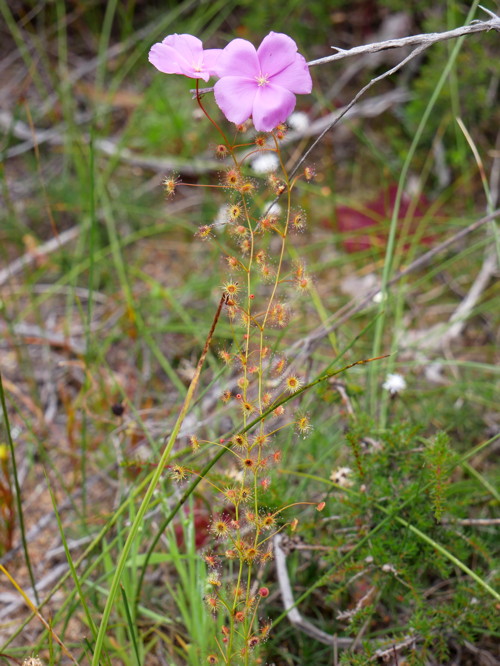
Drosera drummondii. Photo © Thilo Krueger.
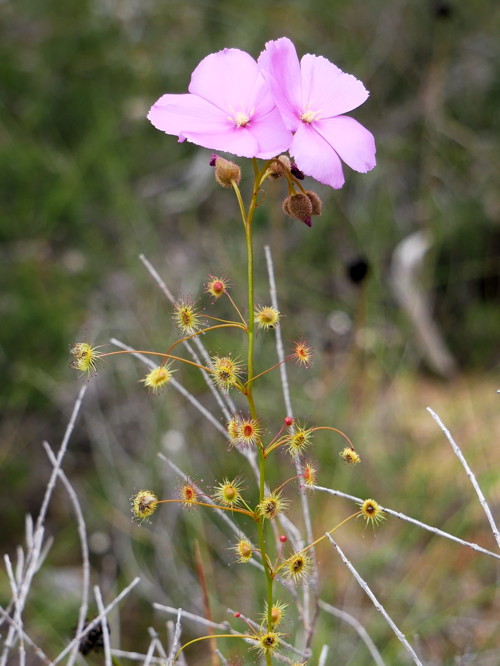
Drosera drummondii. Photo © Thilo Krueger.
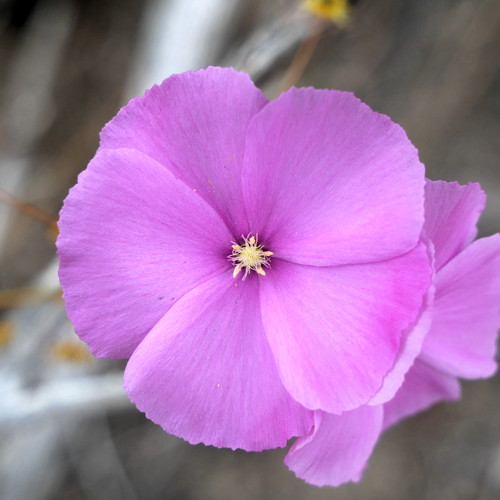
Drosera drummondii. Photo © Thilo Krueger.
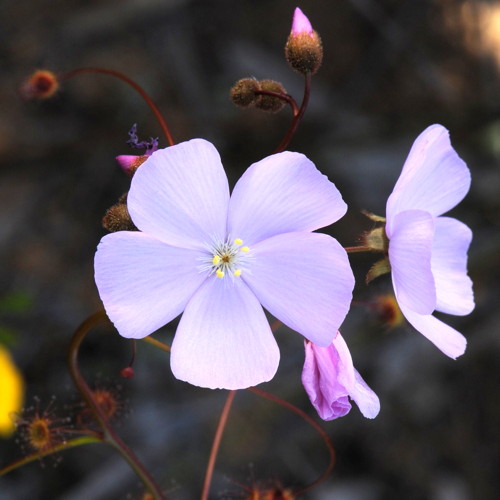
Drosera drummondii. Photo © Richard Nunn.
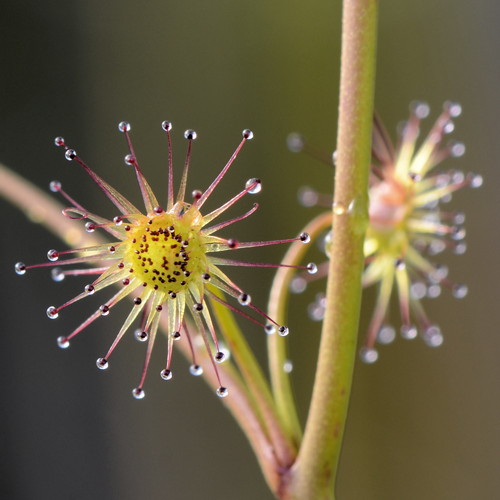
Drosera drummondii. Photo © Richard Nunn.
Drosera eremaea (N.G.Marchant & Lowrie) Lowrie & Conran
The epithet, eremaea, is derived from the Greek eremea (desert), in reference to its semi-arid habitat.
Western Ausstralia – semi-arid regions: Cue; Leonora; Mount Magnet; Mindoolah; upper Murchison River goldfields.
Grows in quartz grit and loam soils on the aprons of granite outcrops, in winter-wet creeks and in open ground. Experiences extremely hot desert conditions in summer.
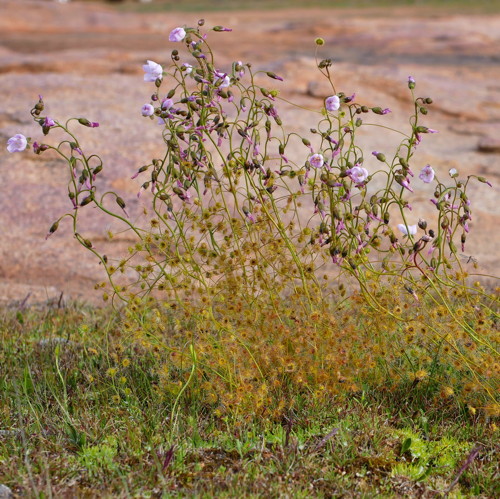
Drosera eremaea. Photo © Thilo Krueger.
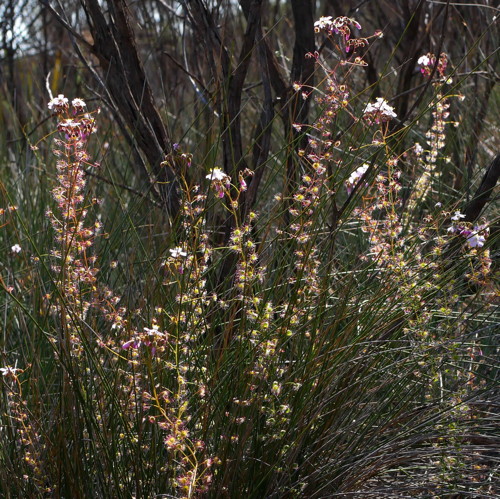
Drosera eremaea. Photo © Thilo Krueger.
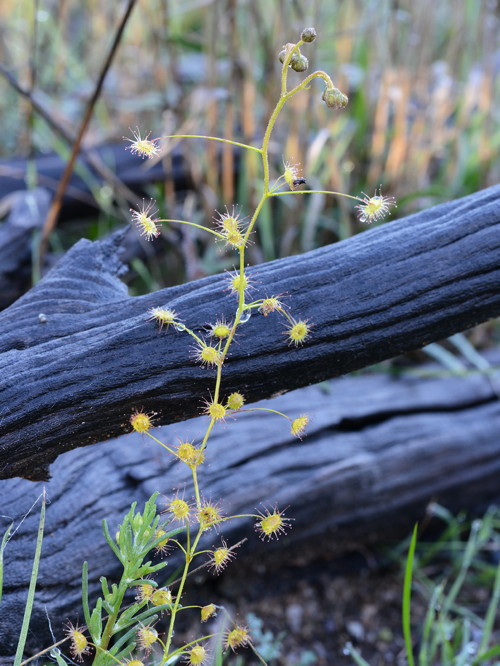
Drosera eremaea. Photo © Richard Nunn.
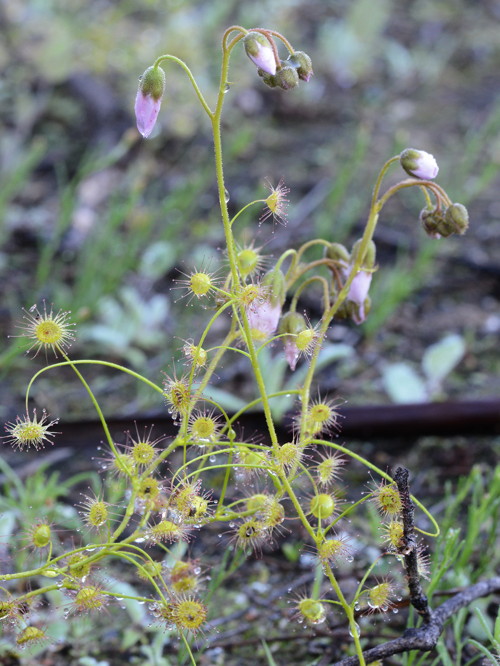
Drosera eremaea. Photo © Richard Nunn.
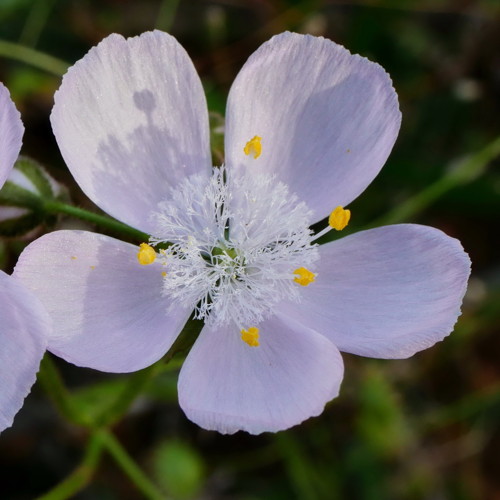
Drosera eremaea. Photo © Thilo Krueger.
Drosera erythrogyne N.G.Marchant & Lowrie
The epithet, erythrogyne, is derived from the Greek erythros (red) and gyno (pertaining to the female sex organs), in this case referring to the red ovary of this species.
Western Australia – Augusta; Walpole; Albany.
Grows in wet peaty sand in swamps, gritty loam on granite outcrop aprons, in pure peat around perennial springs and dense, compact, fine root fibre with the Albany pitcher plant, Cephalotus follicularis.
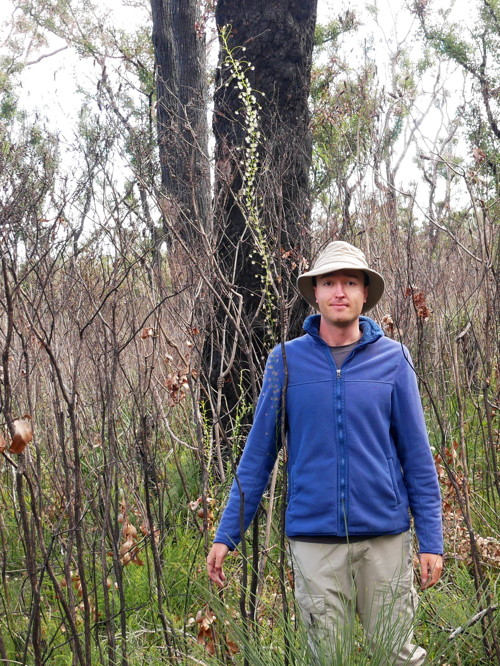
Drosera erythrogyne. Photo © Thilo Krueger.
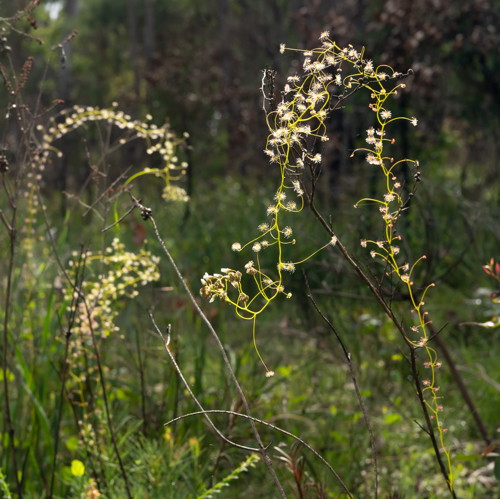
Drosera erythrogyne. Photo © Boaz Ng.
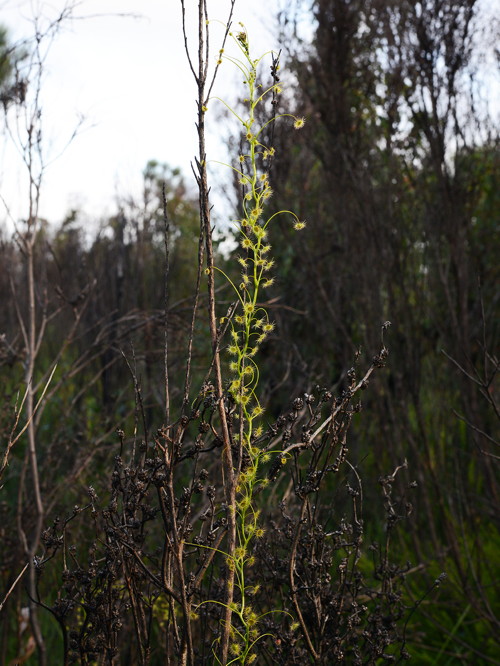
Drosera erythrogyne. Photo © Richard Nunn.
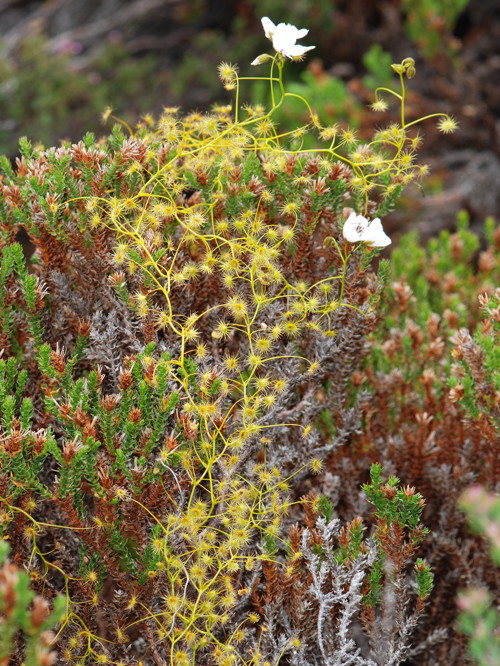
Drosera erythrogyne. Photo © Richard Nunn.
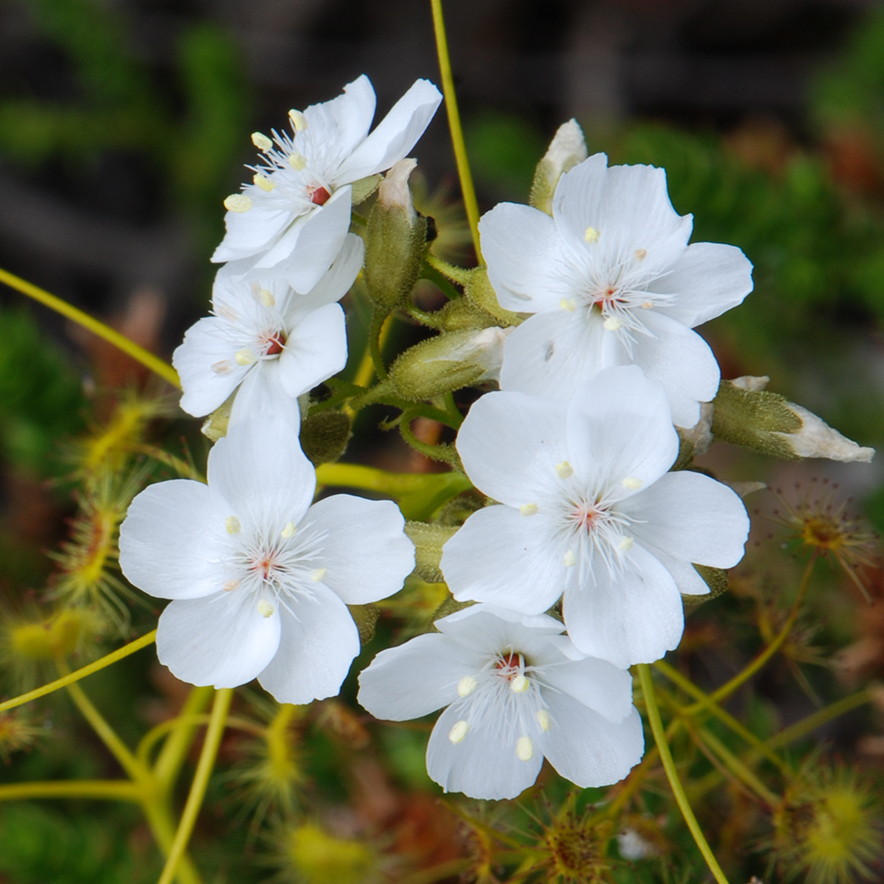
Drosera erythrogyne. Photo © Richard Nunn.
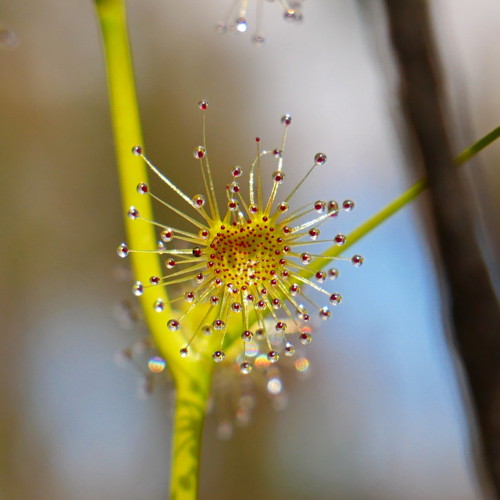
Drosera erythrogyne. Photo © Thilo Krueger.
Drosera erythrorhiza Lindl.
The epithet, erythrorhiza, is derived from the Greek erythros (red), and rhiza (root), in reference to the subterranean organs (the tuber and lateral, root-like, tuber-producing adventitious stolons), which are orange when alive.
Western Australia – Perth; Pinjarra; Yanchep.
Grows in deep silica sand on heathland, and in open woodland on the coastal plains. All locations dry out completely by summer.
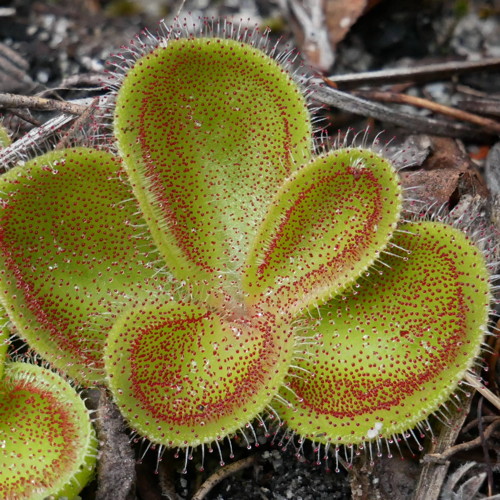
Drosera erythrorhiza. Photo © Thilo Krueger.
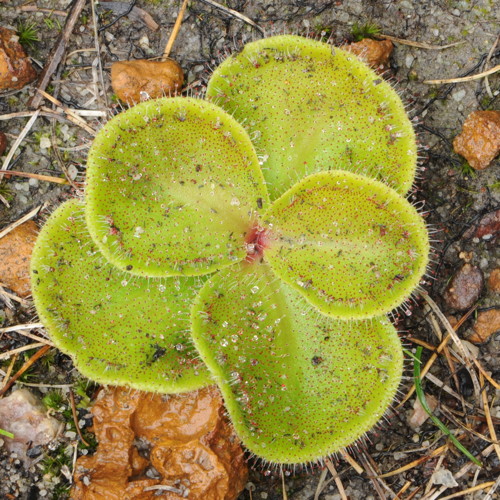
Drosera erythrorhiza. Photo © Richard Nunn.
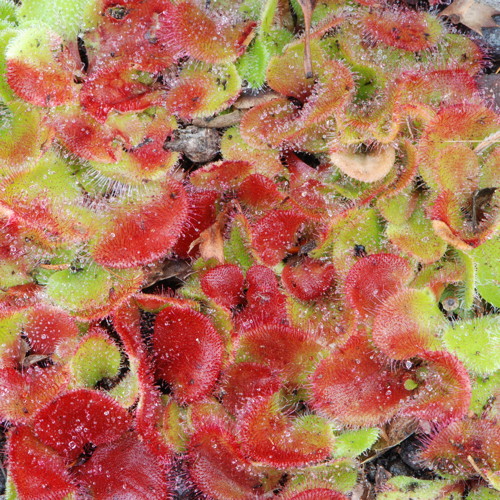
Drosera erythrorhiza. Photo © Richard Nunn.
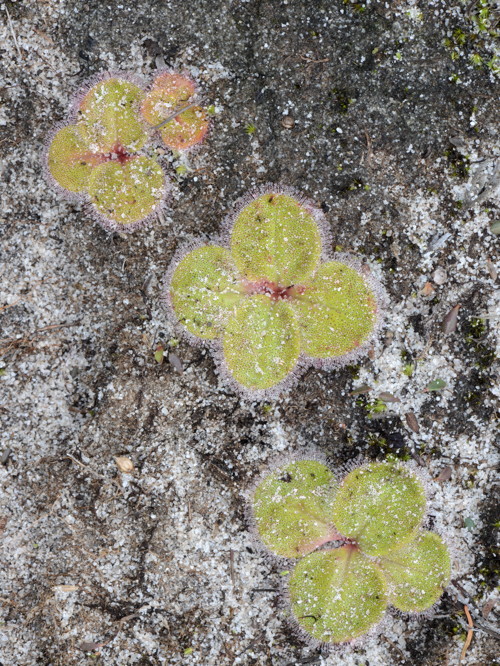
Drosera erythrorhiza. Photo © Richard Nunn.
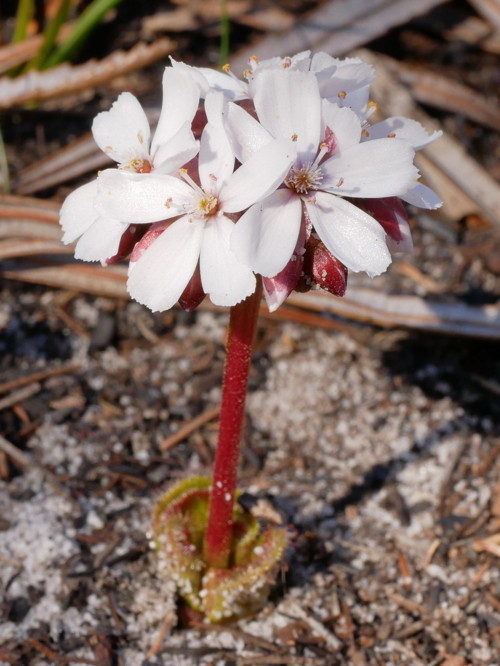
Drosera erythrorhiza. Photo © Thilo Krueger.
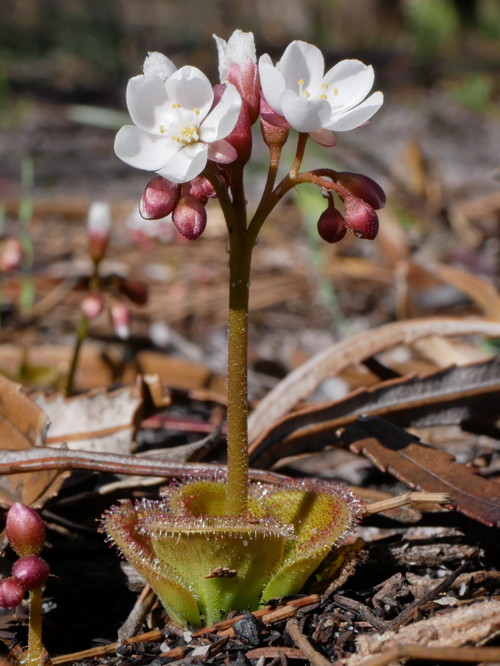
Drosera erythrorhiza. Photo © Thilo Krueger.
Drosera esperensis Lowrie
The epithet, esperensis, refers to the Esperance region in which this species grows.
Western Australia – east of Esperance.
Grows in skeletal, gritty, black silt soils covered with moss on aprons of granite outcrops between low shrubs and other herbaceous plants.
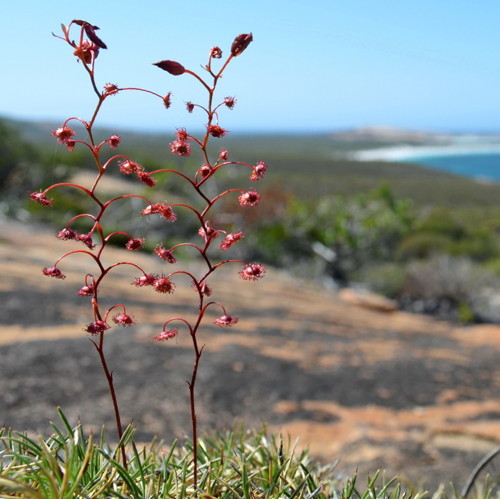
Drosera esperensis. Photo © Thilo Krueger.
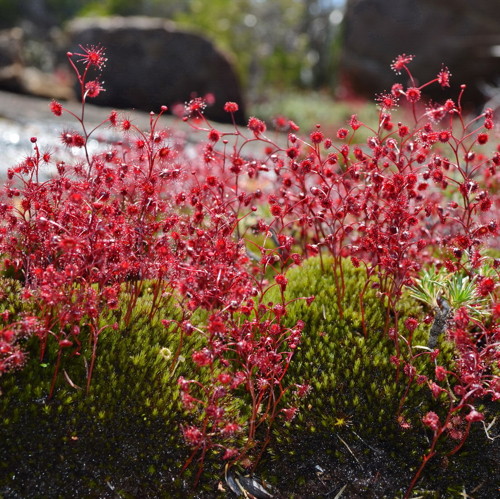
Drosera esperensis. Photo © Thilo Krueger.
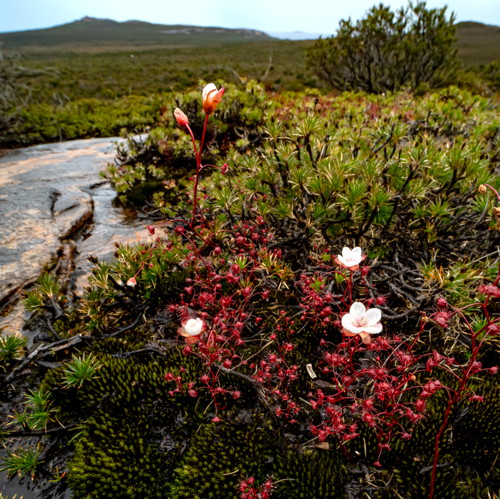
Drosera esperensis. Photo © Boaz Ng.
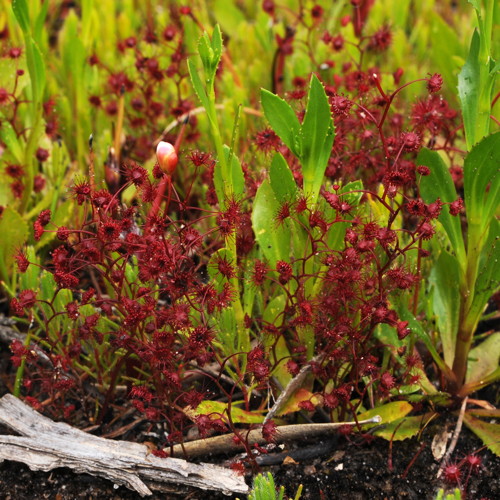
Drosera esperensis. Photo © Richard Nunn.
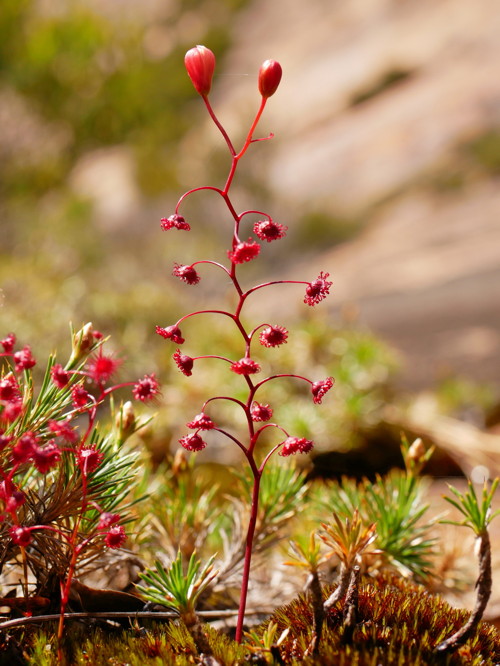
Drosera esperensis. Photo © Thilo Krueger.
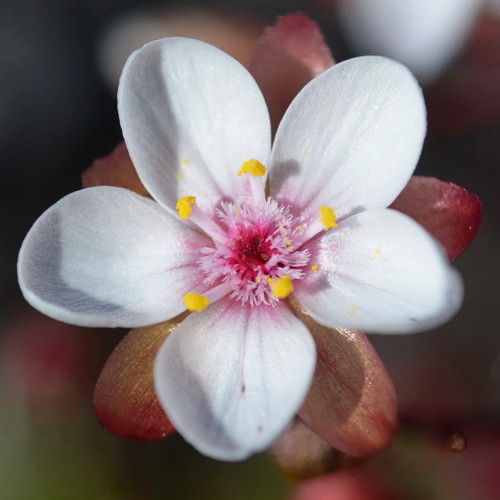
Drosera esperensis. Photo © Thilo Krueger.
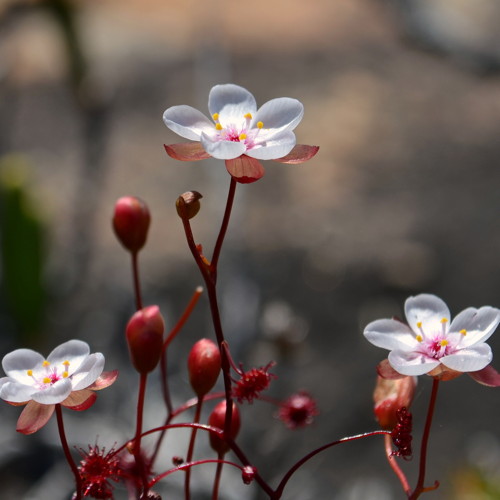
Drosera esperensis. Photo © Thilo Krueger.
Drosera fimbriata DeBuhr
The epithet, fimbriata, is named from the Latin fimbriatus (fringed), in reference to the fimbriate nature of the modified, non-insectivorous leaves on the lower portion of the erect major axis.
Western Australia – known from a few collections from the Scott River area east to the Denmark area, but mostly collected in the Manypeaks area east of Albany.
Grows in winter-wet, well-drained, white or grey sandy soils, amongst low shrubs on heathland east of the Manypeaks and Scott River regions. In the Denmark area, it grows in moss pads on the aprons of granite outcrops with Borya species.
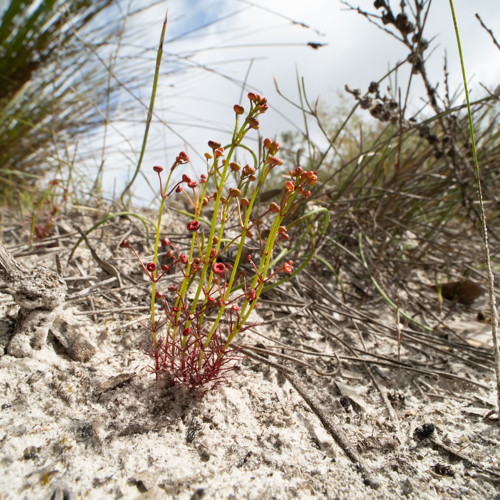
Drosera fimbriata. Photo © Boaz Ng.
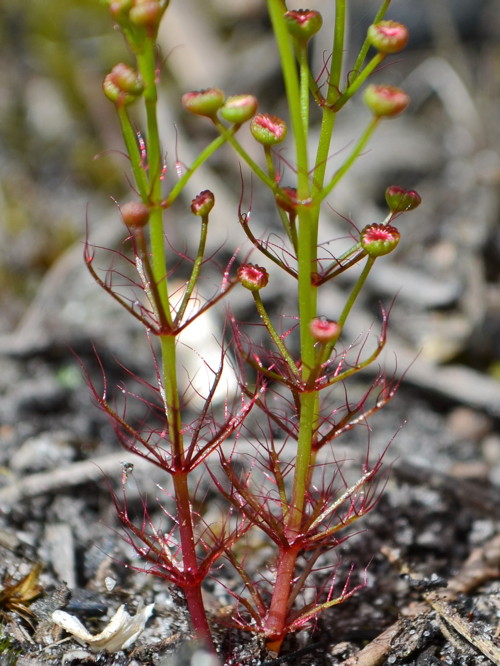
Drosera fimbriata. Photo © Thilo Krueger.
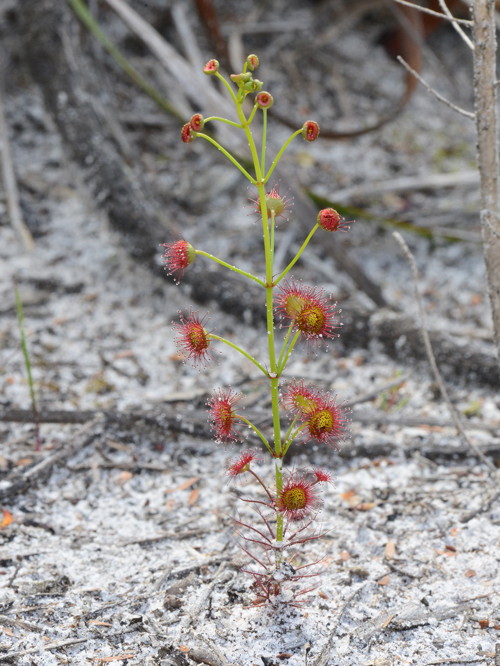
Drosera fimbriata. Photo © Richard Nunn.
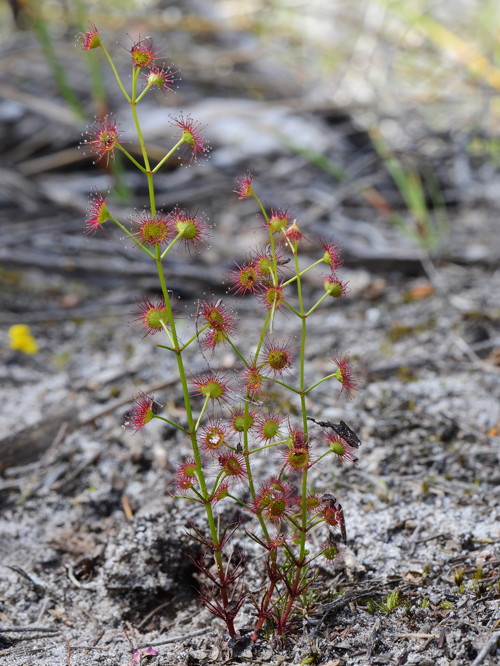
Drosera fimbriata. Photo © Richard Nunn.
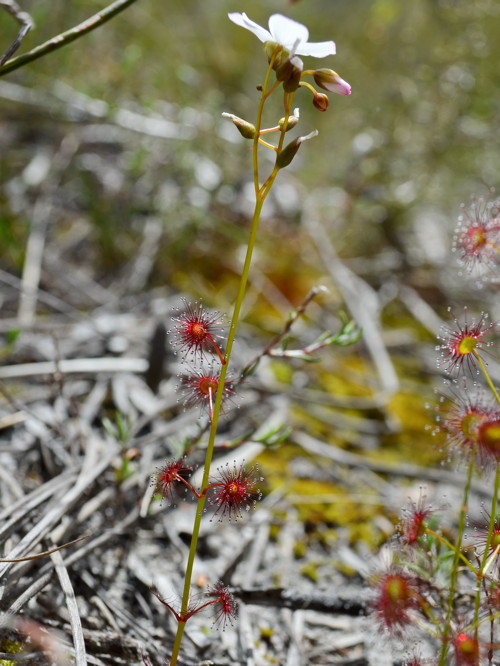
Drosera fimbriata. Photo © Thilo Krueger.
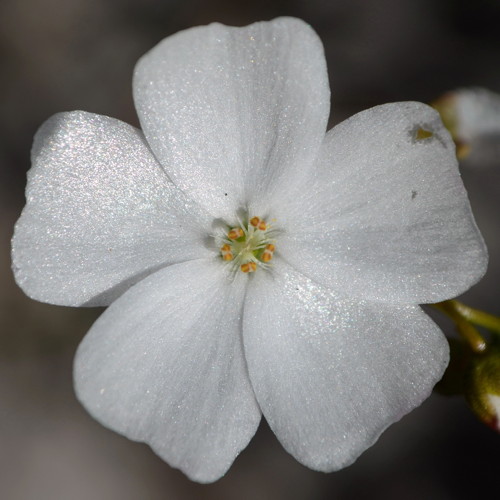
Drosera fimbriata. Photo © Thilo Krueger.
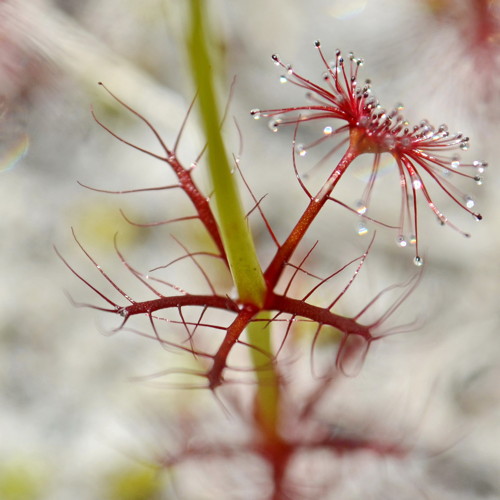
Drosera fimbriata. Photo © Thilo Krueger.
Drosera geniculata (N.G.Marchant & Lowrie) Lowrie
The epithet, geniculata, is derived from the Latin geniculatus (bent sharply like an elbow or knee), in reference to the zigzagging habit of this taxon’s major axis and lateral branches.
Western Australia – Scott River region east of Augusta; Yarloop; Northcliffe.
Grows in black sandy soils on the margins of swamps, mainly on ground that is higher than the average water level in winter.
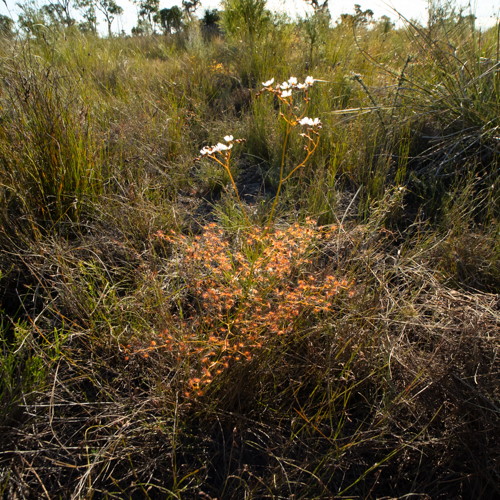
Drosera geniculata. Photo © Boaz Ng.
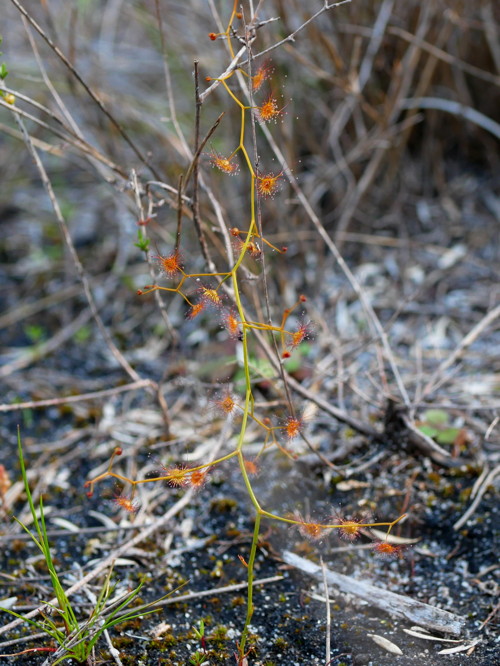
Drosera geniculata. Photo © Thilo Krueger.
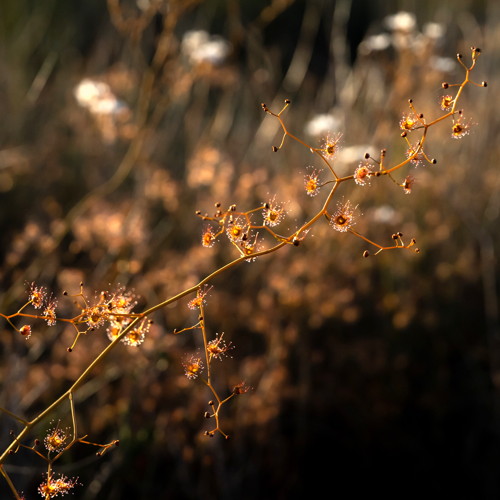
Drosera geniculata. Photo © Boaz Ng.
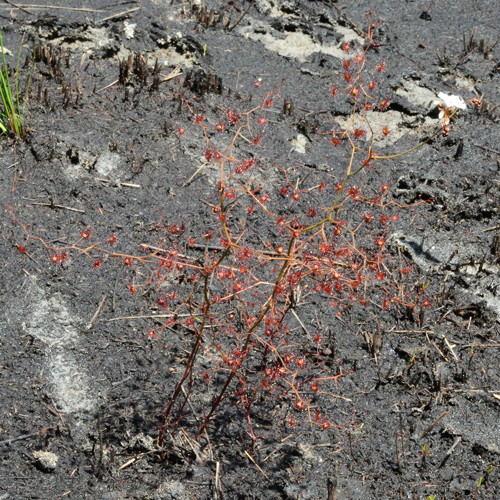
Drosera geniculata. Photo © Richard Nunn.
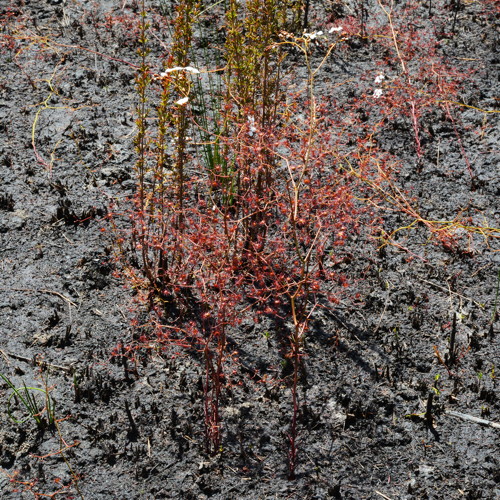
Drosera geniculata. Photo © Richard Nunn.
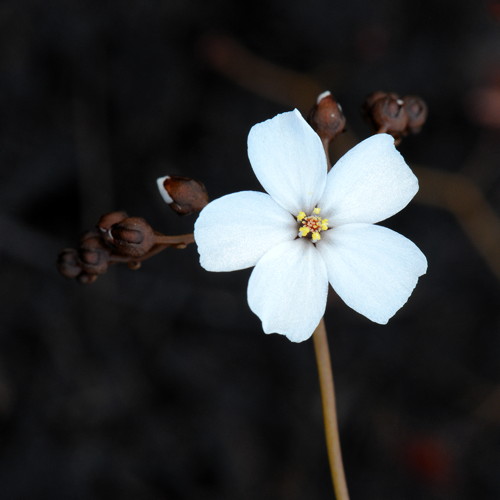
Drosera geniculata. Photo © Richard Nunn.
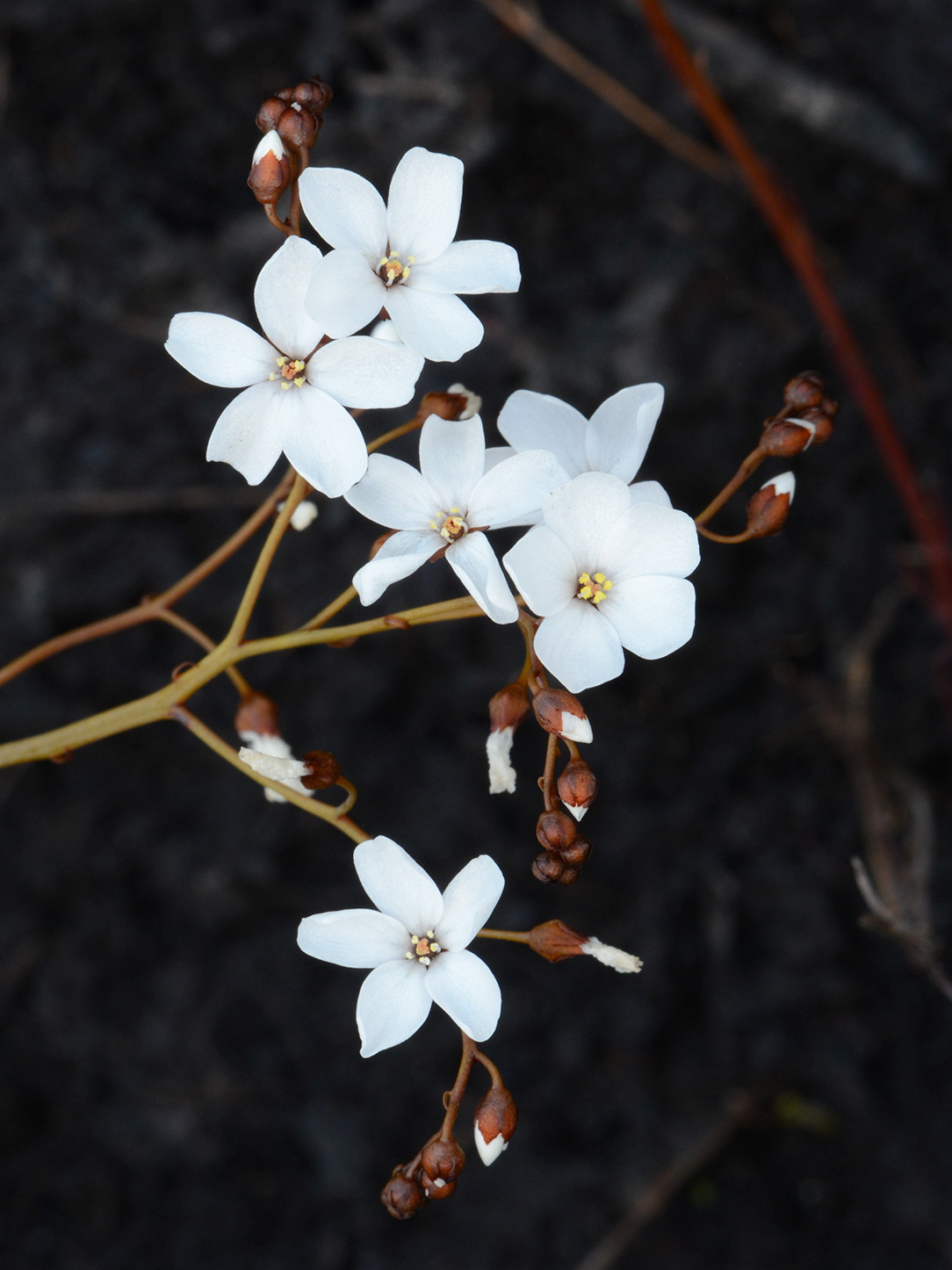
Drosera geniculata. Photo © Richard Nunn.
Drosera gigantea Lindl.
The epithet, gigantea, is derived from the Latin giganteus (giant), in reference to the exceptionally large form of this species in comparison to most other tuberous Drosera in Western Australia, but also the genus as a whole.
Western Australia – Busselton; Denmark; Manjimup; Mount Lesueur; Mount Barker; Perth; Pinjarra; Three Springs.
Grows on the margins of swamps, lakes and granite outcrops, often standing in water. Also grows in washes and sandy clay flats in wet soils on higher ground.
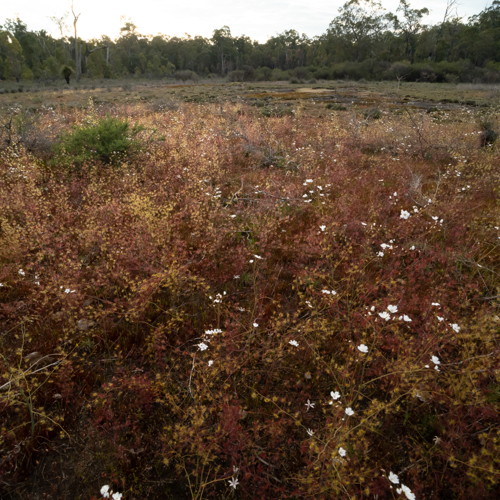
Drosera gigantea. Photo © Boaz Ng.
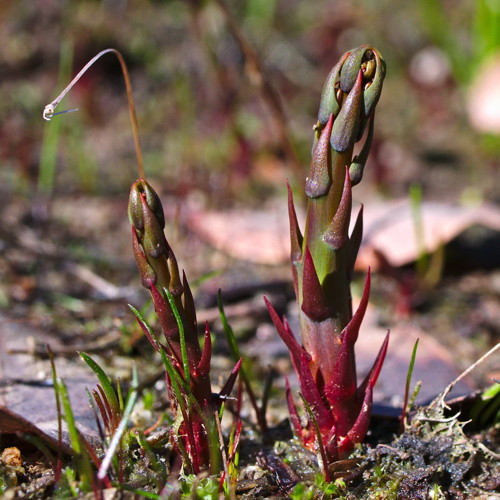
Drosera gigantea. Photo © Thilo Krueger.
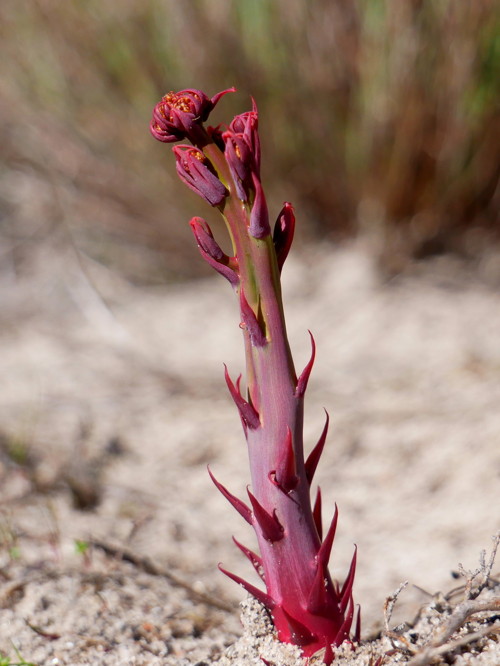
Drosera gigantea. Photo © Thilo Krueger.
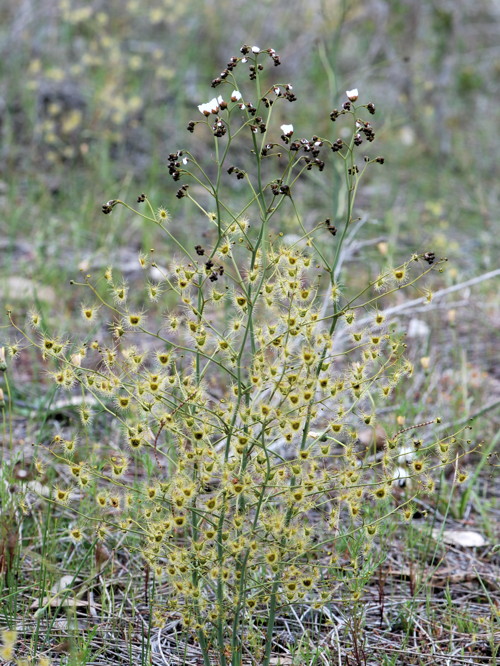
Drosera gigantea. Photo © Richard Nunn.
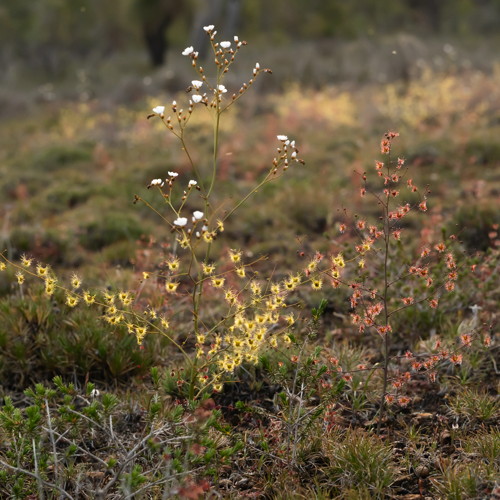
Drosera gigantea. Photo © Boaz Ng.
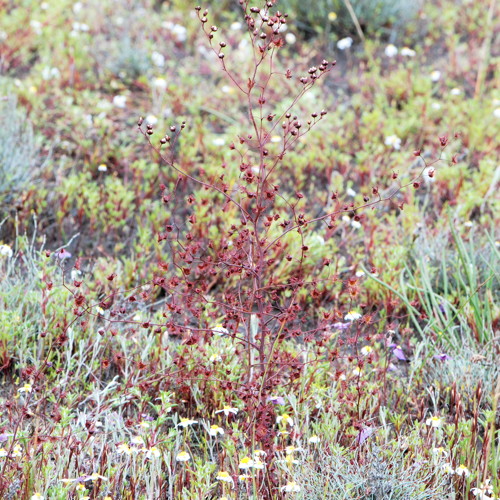
Drosera gigantea. Photo © Richard Nunn.
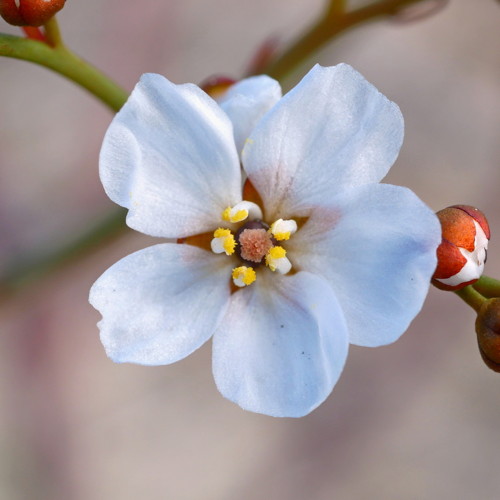
Drosera gigantea. Photo © Thilo Krueger.
Drosera gracilis Hook. f. ex Planch.
The epithet, gracilis, is from the Latin gracilis (thin, slender), in reference to its fine overall form, especially in terms of its very slender, erect major axis.
South Australia – Desert Camp Con. Res.; Glenshera; The Marshes. New South Wales – near Lake McKenzie, Jervis Bay; Shannons Flat, south of A.C.T. border; near Eucumbene River crossing, Snowy Mountains; Gooandra Fire Trail, north of Kiandra. Victoria – Bogong High Plains; Falls Creek; Grampians; Kiandra; Mt Wombargo; Shannons Flat. Tasmania – Blackmans Bay; Cradle Mountain; Georges Bay; Great Lakes area; Lake St. Clair; Lulworth; Mt Arrowsmith; Mt Field; Mt Rocky, Nive River NE of Lake Wayatina; N of The Needles; Penguin; Pickets Plain; halfway between Derwent Bridge and Queenstown. It is also found in the highlands of New Guinea, notably the environs of Lake Habbema.
It grows in black, peaty soils in the alpine snow fields, in peaty soils and gritty sand on skeletal soils over granite outcrops at lower altitudes in Victoria and Tasmania, in wet sandy soils of swampland at low altitudes in South Australia. In New Guinea it is recorded from waterlogged, high-altitude alpine herb fields, where it occurs in dark peaty soil or stands of pure, fine sand.
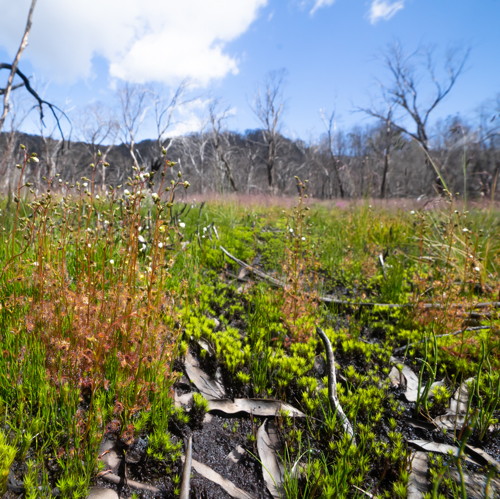
Drosera gracilis. Photo © Boaz Ng.
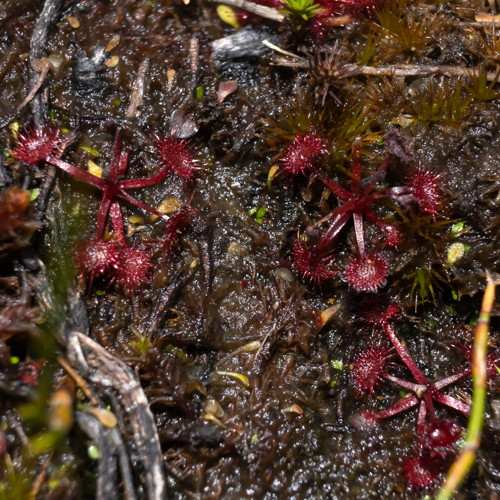
Drosera gracilis. Photo © Boaz Ng.
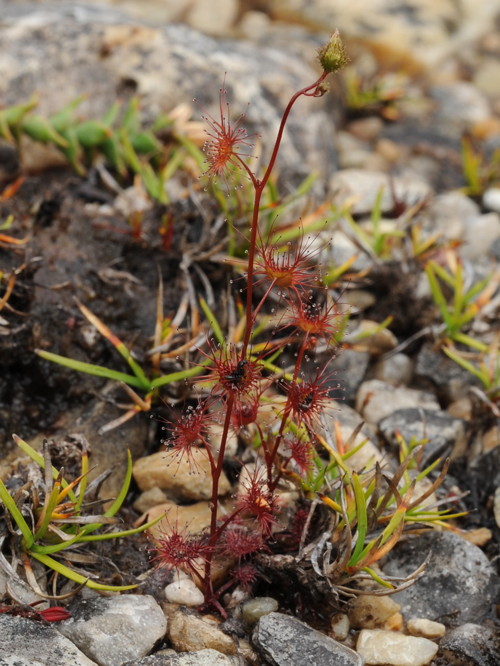
Drosera gracilis. Photo © Richard Nunn.
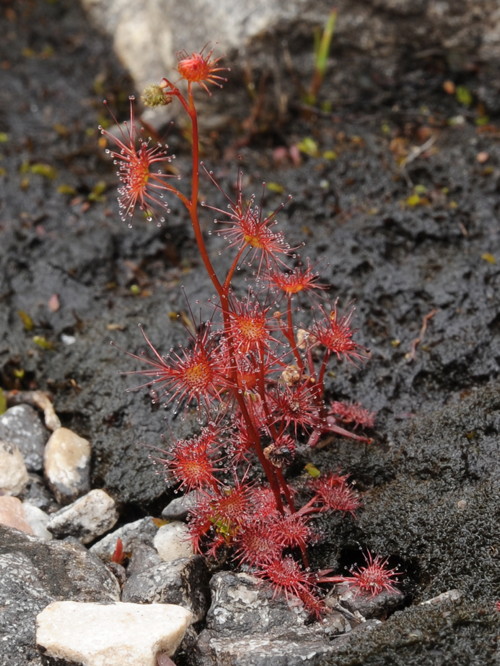
Drosera gracilis. Photo © Richard Nunn.
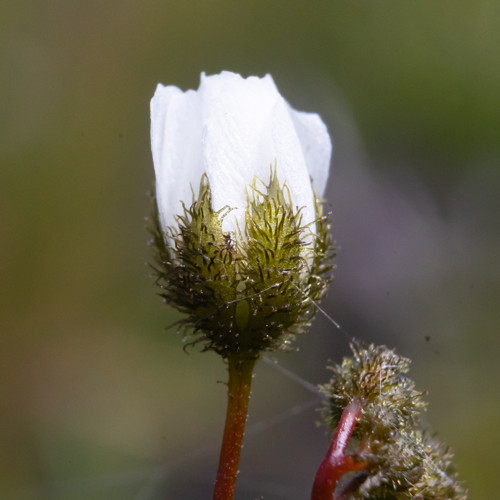
Drosera gracilis. Photo © Boaz Ng.
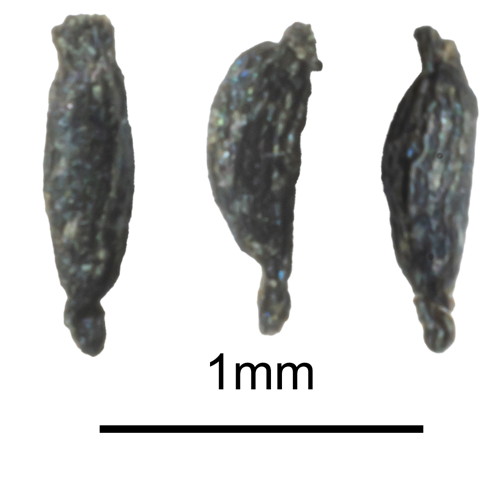
Drosera gracilis. Photo © Boaz Ng.
